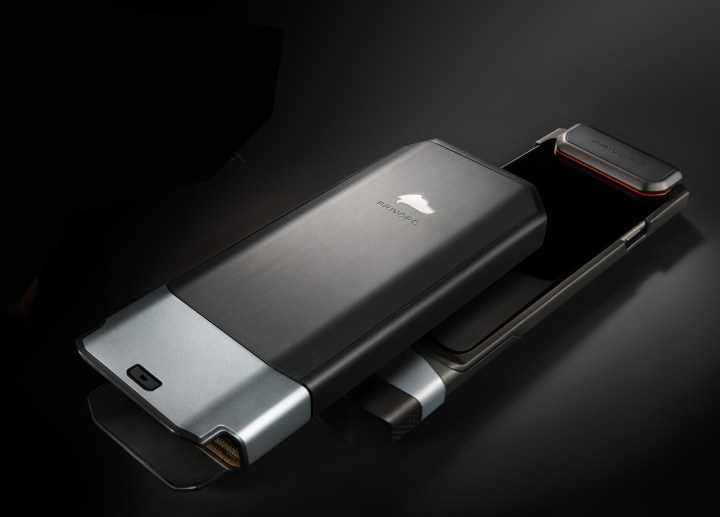
Privoro, unveiled at Pepcom’s Digital Experience at CES 2016, is a physical privacy guard for your phone. Methods for protecting yourself software-wise has been around — but Privoro is a Faraday cage you envelop your phone in, making it undetectable from cell towers, Wi-Fi hotspots, Bluetooth, and other radio frequency technologies. It also blocks the phone’s cameras, and has an Active Audio Masking feature that transmits various sounds to the smartphone’s microphones, jamming them and making eavesdropping impossible.
The company has an app you can use to verify if the privacy guard works. You can still use your smartphone, even take calls and selfies, with the device on, and you’ll just need to raise the hood to enable the speaker and camera. When you’re on the go, seal it with the cover.
It’s a bulky add-on with a lot going on inside it, so you should only use it if you’re heading to a super-important secretive meeting — which probably means you’ll never need it.
You can charge the device with the case on, but the device itself has a battery life of 48 to 72 hours, providing about 48 hours of continuous Active Audio Masking protection. There’s an indicator on the case that will flash white and red when you have to recharge the case.
Right now, the Privoro Privacy Guard is available for the iPhone 6 and the 6S, and the company is hoping to make more cases for various other smartphones. In the meantime if you happen to have an iMac, Privoro has a guard for it that connects to the top of the monitor, blocking the camera, and it also has the same Active Audio Masking technology to stop someone from eavesdropping while you work.
The product isn’t cheap — the iPhone 6/6S privacy guard will set you back $1,000. The iMac version will cost $500, and will be available for pre-order in the first quarter of 2016. The smartphone guard is available for pre-order now, and is expected to ship by the spring of 2016.
Editors' Recommendations
- This cute AI gadget wants to replace your smartphone
- This bizarre AI device may replace your smartphone in the future
- Samsung Home Hub uses A.I. to make your home smarter
- Homey probably works with all your smart devices. And it respects your privacy
- How to protect your smartphone from hackers and intruders

